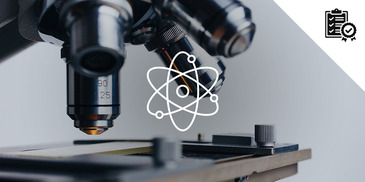
Has a large group of vertebrate fossil pictures, a guide on preparing fossils, and much more.
- Subject:
- Science
- Material Type:
- Diagram/Illustration
- Provider:
- University of Florida
- Date Added:
- 12/01/2023


Has a large group of vertebrate fossil pictures, a guide on preparing fossils, and much more.

A video presentation describing how transport proteins in the cell membrane allow solutes to cross the cell membrane without the use of cellular energy. [5:41]

This record is just a fake instructional material for use by Instructional Material Reviewers to test their ability to comment and endorse content.

Kids have many ideas about how and why things fall based on their daily life experiences. However, many of these ideas are misconstrued. Learn from this video how to clear up these misunderstandings about gravity and help your students understand concepts of mass, weight, inertia, and air resistance. [9:51]

This lesson is provided to introduce students to the geography and people of the Sahel region and to have them discover the challenges and conflicts faced by the inhabitants. They learn about desertification and what farmers are doing to re-green their land. [4:39]

This lesson introduces students to the factors that contribute to desertification and solutions that have been implemented in the Sahel region of West Africa. A 21-page teaching guide is also provided. [4:39]

In this video segment [5:16] adapted from NOVA scienceNOW, scientists in western Greenland explain how a glacier there is shrinking and moving faster due to increased melting.

Students are asked to explain how the sun is a major source of energy. [0:32]

The government's site on fermilab, a huge physics research lab institution.

The third paragraph pinpoints the importance of hyperons in particle research. Hyperons and neutrinos share characteristics of the weak force. Complex stuff, but the real deal. Parts of this report may be very useful. Many photos, slow to arrive.

A video exploring the process of fertilization where two sets of chromosomes come together to form a zygote. Video defines haploid, diploid, zygote, and fertilization. [10:26]
Khan Academy learning modules include a Community space where users can ask questions and seek help from community members. Educators should consult with their Technology administrators to determine the use of Khan Academy learning modules in their classroom. Please review materials from external sites before sharing with students.

This video describes the role of the brain in regulating body temperature and how sometimes fever is employed to fight off infection.

Explore this impressive compilation of scientific research focused on the Carboniferous Period in the late Paleozoic Era.

Delve into the details of the Quaternary Period of the Cenozoic Era, which presents enlightening scientific data about the present-day ice age and the evolving planet.

Delve into the Tertiary Period portion of the Evolving Planet exhibit, and trace the climate and continental shift during this time. Includes an overview of the period, a collection of images, and a look at the Tertiary Period's contribution to the evolution of our planet and its creatures.

Read a passage about our immune system and answer the follow-up questions.
Khan Academy learning modules include a Community space where users can ask questions and seek help from community members. Educators should consult with their Technology administrators to determine the use of Khan Academy learning modules in their classroom. Please review materials from external sites before sharing with students.

A comprehensive look at energy ranging from types of energy to the exploration of electricity. Learning puzzles and games are included.

An introduction to the concept that energy cannot be created nor destroy, but can only change form. [9:18]
Khan Academy learning modules include a Community space where users can ask questions and seek help from community members. Educators should consult with their Technology administrators to determine the use of Khan Academy learning modules in their classroom. Please review materials from external sites before sharing with students.

Playing and exploring movement as a form of propulsion.
In this lesson, students will explore and experiment with the concept of propulsion through play, discovery, explicit instruction, design challenges, and the use of the augmented reality application Aurelia. Learning and activities can be easily scaffolded to address further concepts such as drag, turbulence, fluid friction, efficiency of energy, adaptation, and body plans.
Estimated time required: 1 class period.
Technology required for this lesson: Laptop/Desktop, Tablet or Smartphone.

Playing and exploring movement as a method of propulsion featuring the Aurelia app.
In this lesson, students will continue to explore and experiment with the concept of propulsion through play, discovery, explicit instruction, design challenges, and the use of the augmented reality application Aurelia. Learning and activities can be easily scaffolded to address further concepts such as drag, turbulence, fluid friction, efficiency of energy, adaptation, and body plans.
Estimated time required: 1 class period.
Technology required for this lesson: Laptop/Desktop, Tablet or Smartphone.